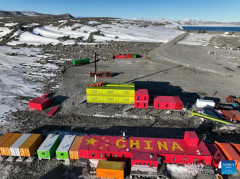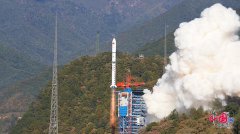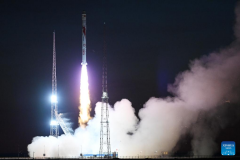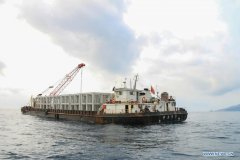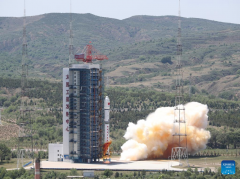Home>>
World's deepest underground lab expanded to help China detect dark matter(Xinhua) 09:43, December 09, 2023
* The world's deepest and largest underground physics laboratory went operational Thursday in southwest China's Sichuan Province.
* A laboratory that can shield cosmic rays and provide an experiment environment and facilities with an extremely low radiation background becomes a prerequisite for dark matter detection.
* After about three years of construction, the DURF welcomed its first batch of teams. As a major national project, the facility will develop into a world-class platform integrating multiple disciplines including particle physics, nuclear astrophysics and life sciences.
CHENGDU, Dec. 8 (Xinhua) -- The world's deepest and largest underground physics laboratory went operational Thursday in southwest China's Sichuan Province, as physicists moved in and started their research in the second phase of the China Jinping Underground Laboratory (CJPL).
The second phase project, or the Deep Underground and Ultra-low Radiation Background Facility for Frontier Physics Experiments (DURF), boasts the deepest, largest, ultra-clean underground space for scientific research. A total of 10 teams from universities and research institutions are stationed there and will seek to unveil the mysteries of the universe.
DARK MATTER DETECTION
In the vast universe, visible matter varying in size from a grain of dust to a planet like Earth or nebulae, only accounts for about 5 percent of the total mass of the universe. The remaining 95 percent consists of dark matter and dark energy.
The probability of dark matter interacting with visible matter is so low that it is very difficult to detect it directly, while ubiquitous cosmic rays can also greatly interfere with the efforts of physicists to detect dark matter.
Therefore, a laboratory that can shield cosmic rays and provide an experiment environment and facilities with an extremely low radiation background becomes a prerequisite for dark matter detection. The United States, Japan and some European countries have built underground laboratories meeting this requirement.
In 2009, Tsinghua University and the Yalong River Hydropower Development Company, Ltd. began to build the first phase of CJPL at a depth of 2,400 meters under the Jinping Mountain in Sichuan's Liangshan Yi Autonomous Prefecture.
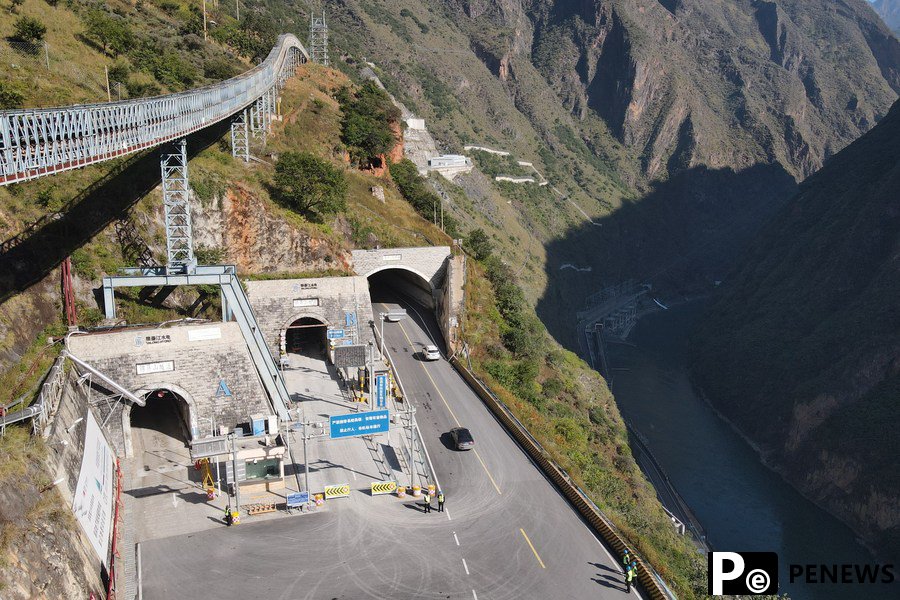
This aerial photo taken on Nov. 8, 2023 shows the tunnel entrance of the China Jinping Underground Laboratory in Liangshan Yi Autonomous Prefecture, southwest China's Sichuan Province. (Xinhua/Xu Bingjie)
The first phase was completed and put into use at the end of 2010, featuring a room capacity of about 4,000 cubic meters. Thanks to rocks as thick as 2,400 meters, the laboratory is exposed to only a tiny flux of cosmic rays which is only a hundred-millionth of that found on the surface.
Two research teams, China Dark Matter Experiment (CDEX) group from Tsinghua University and PandaX group from Shanghai Jiao Tong University, were deployed in the first phase of CJPL. They now have a number of scientific achievements under their belts, elevating China's dark matter direct detection experiments to an advanced level on the global stage.
SECOND PHASE CONSTRUCTION
Given their growing list of achievements in the first phase of CJPL, it was felt that the research teams needed more space to carry out further studies. In 2014, Tsinghua University and the Yalong River Hydropower Development Company, Ltd. agreed on a plan to build a second phase to expand total room capacity at the facility to about 330,000 cubic meters.
To ensure the cleanest possible environment for the second phase of this project, builders had to meet the requirements of ultra-low cosmic ray flux, extremely low environmental radiation, extremely low radon concentration, and ultra-clean space.
For example, radon gas constantly released by surrounding rocks is a major source of interference in deep underground experiments. The construction team invented waterproof and radon suppression technology, and used special materials to lay a protective layer with a thickness of 10 centimeters on the surface of the cavern, thereby blocking 99 percent of the radon gas released by the surrounding rocks.
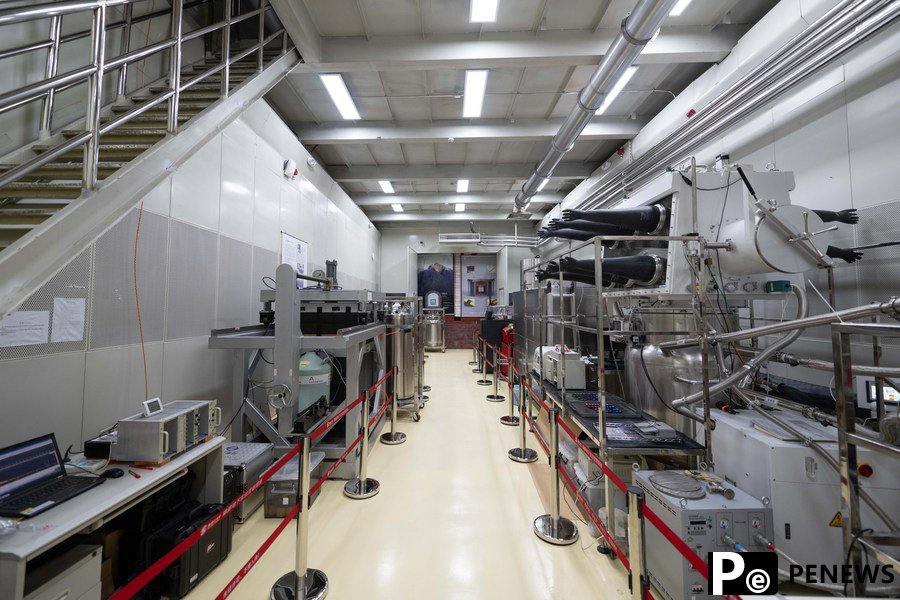
This photo taken on Nov. 7, 2023 shows the interior view of the first phase of the China Jinping Underground Laboratory in Liangshan Yi Autonomous Prefecture of southwest China's Sichuan Province. (Xinhua/Xu Bingjie)
Background radiation of building materials and equipment were also taken into account. All materials and equipment must have a radiation background of less than three times that of the radioactivity level of rocks surrounding the cavern, and such materials and equipment could only be used after strict laboratory inspection.
